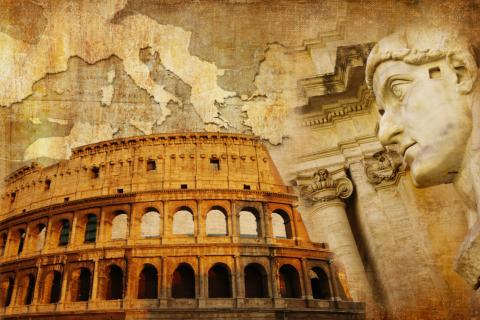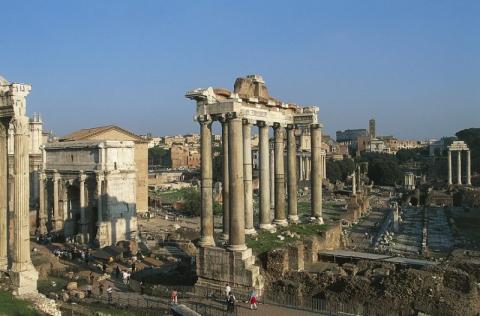+1(209) 348-9544
order@myessayservices.com
+1(209) 348-9544
order@myessayservices.com
![]() Are you in High School, College, Masters, Bachelors or Ph.D and need someone to help in your homework? All you need is to ask for research paper help written by a specialist in your academic field. When you buy an essay online from My Essay Services, we offer you an original, nil plagiarized and unique paper written by a dedicated writer who is PhD or Masters qualified. MyEssayServices.com is an experienced service with over 9 years experience having delivered over 83,000 essays over the years.
Are you in High School, College, Masters, Bachelors or Ph.D and need someone to help in your homework? All you need is to ask for research paper help written by a specialist in your academic field. When you buy an essay online from My Essay Services, we offer you an original, nil plagiarized and unique paper written by a dedicated writer who is PhD or Masters qualified. MyEssayServices.com is an experienced service with over 9 years experience having delivered over 83,000 essays over the years.

 Roman Empire and the Mongol empires were the largest dynasties in the world. They controlled massive territories that spread across long distances. Being able to rule the controlled lands was important. However, the attainment of the lands was equally important. The legacy of the rulers of the day were linked to the ability of the said ruler to expand the territories of the kingdom. Rapid expansion of the lands became part of the main ideals of the government.
Roman Empire and the Mongol empires were the largest dynasties in the world. They controlled massive territories that spread across long distances. Being able to rule the controlled lands was important. However, the attainment of the lands was equally important. The legacy of the rulers of the day were linked to the ability of the said ruler to expand the territories of the kingdom. Rapid expansion of the lands became part of the main ideals of the government.
Arguably, the expansion of the empires led to the development of difficulties in governance that may have contributed to the collapse of the entire regions. The paper will compare the conquests of the two kingdoms for the similarities and differences. The differences in the ruler ship and religion orientations of the two kingdoms does not factor in their conquest approaches.
Rome was involved in various conquests in a bid to protect its interests in the regions, expand regions and create strategic alliances. The earliest involvement of the empire in conquests resulted from the links between the Hannibal and king Philip of Macedon. Rome was not yet settled at the time. It was fighting a war meant to increase its survival in the newly acquired lands. In the process of fighting for survival, the empire supported the Aeolian states in Greece. The empire was also involved in the second war of Macedonia. The first battle was the basis of the second war. The defeat of the Macedonian forces in the first war led to the development of a mumbling seeking to reclaim the lost glory. The king of Macedonia was defeated for the second time and forced to move to the interior lands.
The other early conquest was for the control of the west Asia Minor. The war was fought on two fronts with the Aeolian states support. The leaders of the war were under the command of Antiochus the third. This war was fought between the Seleucid Syrians. The outcome of the Lar led to the push of the Syrians to Asia Minor. The most decisive battle was the battle for Magnesia in 190 BC.
The empire fought the third Macedonia war in 172 BC. The motivation of the war was the protection of Pergamum, which was its ally. The Macedonia forces were under the command of peruses of Macedonia. The command of the Macedonia forces was throng and tactical enough to increase repulse toe invasions mounted by the Romans. He also sought the involvement of the neighboring tribes to the north to fight alongside them in the repulsion of the Roman forces. The Romans used elephants to break the main walls in the regions. The elephants helped Roman forces regain the left wing of peruses armies.
The Macedonia force had a strong defense mounted by the phalanx. The phalanx repelled the elephants even after they had torn into the territories. The destruction of the phalanx was the decisive moment in the work since the Roman regions were now capable of attacking the Macedonian kingdom better. The battle ended with the losses of 25000 soldiers hence the collapse of the Macedonian monarchy. The second conquest by the Roman Empire in Greece was against the Achaean league in Corinth. The battled led to the absolute control of the country by the empire. The Empire had finally managed to repeal the most threatening neighbor.
Just like the Roman Empire, the Mongol Empire also had a period marked by ambitious battles meant to expand the sphere of influence of the nation (Atwood, 2004). The conquests were equally rewarding since they ended up in the rapid expansion of the Mongol empire throughout Eurasia. Mongol Empire was comprised of ruthless rulers who went for the territories that they needed regardless of the damage that they caused. The attacks on the neighboring lands left a trail of orgy of destruction of systems, property and lives. Invasions of the empire led to the development of the largest displacements of people.
 The Mongols were an important source of terror to the European communities on a large scale. The terror made most of the people to make the decision of leaking as opposed to staying to witness the war. The tactics of the Mongols differed from those of the Romans. The Mongols are supposed to be the originators of the Black Death. They used the plague as a weapon by ensuring that they had infected the majority of the communities in the region.
The Mongols were an important source of terror to the European communities on a large scale. The terror made most of the people to make the decision of leaking as opposed to staying to witness the war. The tactics of the Mongols differed from those of the Romans. The Mongols are supposed to be the originators of the Black Death. They used the plague as a weapon by ensuring that they had infected the majority of the communities in the region.
Infection of the cities led to the weakening of their defenses. The Mongols would now set in, methodologically kill the healthy ones, and leave the rest to the back death (Atwood, 2004). This static was mainly functional since it increased the success of the conquests. The ruthless nature of the conquests led to the development of high levels of fear in the principal establishments in the Eurasia region.
The very establishment of the empire was based on conquests. The early conquests conducted by the Mongol empire were in 13th century. The conquests were spread all over the Asia. They reached the Eastern Europe later. The expansionary drive of the leaders led to the adoption of the conquest approach as a way of expanding their territories. After conquering a region, the Mongols controlled it under a strong dynasty (Atwood, 2004). Therefore, the dynasties were also responsible for the expansion of the areas in the regions that were under their control. Fragmentation is one of the main reason behind the massive success of the empire. Destructive practices of the Mongols could have worked for their expansion (Prawdin, 1940). However, they led to the development of disdain.
There are some differences in the approaches used in the fight against the other communities. The differences cover the weapons used, tactics employed, and modes of government. In the case of Rome, the governance was centralized. The emperor was based in Rome and was responsible for the management over the conquered territories. Conquering of the major world territories came with an array of challenges in terms of administration.
Therefore, he had to rule through smaller governors. In the case of Mongol empire, the governance was split into the different micro-segments of the empire (Atwood, 2004). The vassals or tributary states were the main ways of ensuring that the state was well administered. Dealing with smaller issues was charged to the smaller states. This division was active. It is similar to the one used by the Romans since there was a running theme of delegation of duties.
The tactics of the Mongols comprised of early inclusion of the member states in the war (Atwood, 2004). Therefore, the planning for war took place in different locations. In the case of Roman Empire, the planning for war took place in Rome. The centralization of power acted as a major impediment. Instead of attacking a neighboring community and annihilating it ultimately, the Romans sought to make alliances. They allied with communities that later fought t their battles for them. This approach differed.
The Mongols used deadly weapons (Atwood, 2004). Their fashioning of the swords was different with most of their swords curved. They also used bubonic plague as weapon. The only biological evidence that the Romans used was the elephant. The elephants were more like logistic enabling factors and less of weapons. The Romans had more advanced technology since they were an earlier civilization. They had accurate logistic handling procedures compared to the Mongols that relied on the hit and ran tactics.
References
Atwood, C. P. (2004). Encyclopedia of Mongolia and the Mongol Empire (p. 457). New York: Facts on file.
Lendon, J. E. (1997). Empire of honour: the art of government in the Roman world. Oxford University Press.
Prawdin, M. (1940). The Mongol Empire: Its Rise and Legacy. Transaction Publishers.
Introduction

Rising action
The line of parade was now overextended out extremely long, between 15km and 20km. Following this stretch and the poor condition of the pathways in the forest, the German troops furnished with light weapons, narrow-bladed short spikes and big lances attacked the Romans (Grissom, 2009). They enclosed the whole Roman army and poured down spears on the invaders. Arminius obtained the education in Rome thereby understood their strategies and styles. He could also command his fighters to attack the Varus’ force successfully by using the larger numbers of the local troops against the scattered Roman teams (Wells, 2003). The Romans succeeded in building an exhilarated night camp, and the following morning invaded the open country north of the Wiehen Hills next to the present town of Ostercappeln (McNally & Dennis, 2011). The invasion came with high fatalities to the Roman survivors. This is because any further trial to escape by parading through a different forested part was inhibited by the heavy rains that persistent. The rain blocked them from using their bows, and their shields were also saturated making them defenseless (Grissom, 2009).
Climax
Any attempt to make movement by the Varus force was fruitless as the roads were blocked, and the Kalkriese Hill also acted as a barrier to their matching and escape. These obstacles enabled the Germanic troops to attack the Roman soldiers under protection. The Romans made a fruitless attempt to break the earthen wall and storm it down but still failed. The assistant commander to the Roman’s leader, Legatus Numonius Vala, left the team though his departure had no impact on the remaining troop. He was later captured and killed by the Germanic troops soon afterwards (Clunn, 2005).
Falling action
The Germanic warriors consequently took over the field and killed the collapsing Roman forces. Varus committed suicide, a commander, Praefectus Ceionius disgracefully laid down his arms, then committed suicide later, while his partner Praefectus Eggius bravely died resulting in the troubling of his soldiers (Clunn, 2005). Roman fatalities were approximate at 15,000-20,000 deaths, and many other colonels were reported to have taken their lives by using their swords in the appropriate way (Wells, 2003). It is also reported that many generals were used as sacrifices by the Germanic army during their native rituals and religious celebrations. Also, some of the survivors were cooked and their bones used for ceremonials. Others were rescued, and some normal militias seemed to have been imprisoned.
Conclusion
The victory of the Germanic force was followed by the clearance of all the Roman garrisons, forts and cities. The garrison under the Lucius Caedicius and other survivors of the battle invaded through the barrier and stretched to Rhine (Wells, 2003). The Seventeenth and Nineteenth legions were not utilized further by the Romans. They were reformed and restructured. The Eighteenth Legion was reconstructed during the reign of Nero but split under Vespasian. The fight marked the culmination of victorious Roman enlargement that followed the termination of the Civil Wars 40 years before. Augustus’ half-son Tiberius developed successful control and arranged for the furtherance of the battle (Grissom, 2009).
Role played by the commanders in the battle
Commanders from both sides of the battle played the important roles for the achievement of the mission to win the battle. Arminius, the commander of the Germanic force, developed effective strategies for attacking the Romans. He was well-conversant with the tactics of the Romans as he attained education in Rome (Wells, 2003). This enabled him to come up proper ways of defending and offending against the Romans. He also supplied the troops with the necessary weapons and resources such as food and other necessities to ensure that he gained victory (Venckus, 2014).
Moreover, he assumed the leadership role of the team and had strengths in formulating effective leadership styles and framework to achieve the team’s mission. However, his weakness was that he did not develop proactive plans of preventing the Roman troops from gaining access to the forest. This was much dangerous because they could have been overpowered by the Romans if the Roman force was familiar with the conditions of the forest. On the other hand, General Publius Quinctilius Varus of the Roman army played the role of leadership by ensuring that the troops received the required resources in the battle despite their defeat (McNally & Dennis, 2011). He, however, failed to conduct a preliminary study of the terrains and the condition in the forest before commencing the battle. He could have sent a team to conduct a field plan on how to enter and move through the forest’s narrow pathways.
The significance and lessons learn from the battle
It is observed that the unusual army of the Germania destructed the most superlative and professional Roman Legions by implementing guerrilla combat tactics. This is significant since this kind of warfare can, therefore, receive recognition and considerable status in the Civil War. The battle also viewed as an impressive accomplishment of unconventional Army mission in the perspective of military account (Clunn, 2005). The war zone of the two armies has been given a high recognition, for example, river Rhine being included in the history of modern Germany. Following the victory over the Romans, the battle has enabled the Germans to live independently and free from the Tax man of Rome and the enforcer (Venckus, 2014).
Subsequently, the Germans have regarded themselves equal to the Romans in the fight. The battle also shows that the Romans were not unconquerable as they could be defeated remarkably by the Germanic force (Grissom, 2009). Furthermore, the aftermath of this battle also made the Romans feel weaker and declined in war while the Germans ascended the ladder of warfare. Moreover, the victory of the Germanic force made Arminius a nationalistic symbol of German nationalism. Also, despite an army being traditional, the implementation of a good leadership methodology for the soldiers by the commanders is a road to a battle victory. Also, ensuring a large force, and supplying the soldiers with adequate resources can make the force gain victory over a professional force that has a small number of troops. It can also be noted that the familiarity of the battlefield and war zones such as the terrains can contribute to the success of a troop.
Reference
Clunn, T. (2005). The quest for the lost Roman legions. New York: Savas Beatie.
Grissom, M. (2009). Teutoburg Forest, Little Bighorn, and Maiwand: Why Superior Military Forces Sometimes Fail. Ft. Belvoir: Defense Technical Information Center.
McNally, M., & Dennis, P. (2011). Teutoburg Forest, AD 9. Oxford: Osprey Pub.
Venckus, L. (2014). Rome In The Teutoburg Forest. Pickle Partners Publishing.
Wells, P. (2003). The battle that stopped Rome. New York: W.W. Norton.
Browse More Essay Topics 24/7/365 Support 11+ Yrs in Essay Writing Pay for Quality not Quantity Score that A+ Grade
Affordable Papers
Research Paper for Sale
Cheap Research Papers
Buy Term Papers
Buy Research Paper
Write My Paper
Buy an Essay
Cheap Essay Writer
Write my Essay
Thesis Help
Dissertation Help
Paper Writing Service
Pay for Homework
Pay for Research Paper
Do My Essay for Me
Pay for Essay
College Papers for Sale
Do My Homework for Me
College Essays for Sale
Buy Research Papers Online
Buy College paper
Client: "(Berlin, G.K., CA)"
Topic title:"Leadership shortfalls in Blue Chips"
Discipline: "Economics"
Pages: 5, (APA)
" Awesome, the writer delivered it as required by the professor. They also sent me a plagiarism & grammar report Wow!. I was worried about how the essay would turn up but this is exactly what wanted. Thank you and will be back with a longer essay"
Accounting Research Papers
Business Research Papers
Communication Research Papers
Computer Science Research Papers
Economic Research Papers
Film Studies Research Papers
Finance Research Papers
Geography Research Papers
History Essays
Psychology Research Papers
Political Science Research Papers
Nursing Research Papers
Mathematics Essays
Management Essays
Literature Essays
Law Essays
World Affairs Essays
Technology Essays
Sociology Essays
Science Essays
Religion Essays
+1(209) 348-9544
Terms
Privacy
Sitemap
Frequently Asked Questions
0% Plagiarism Guarantee
Money Back Guarantee
Revision Policy
